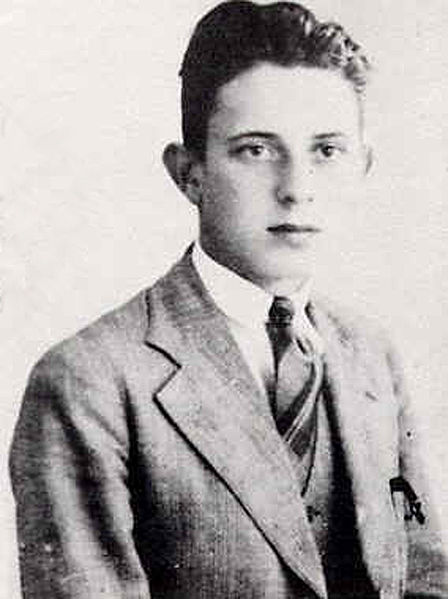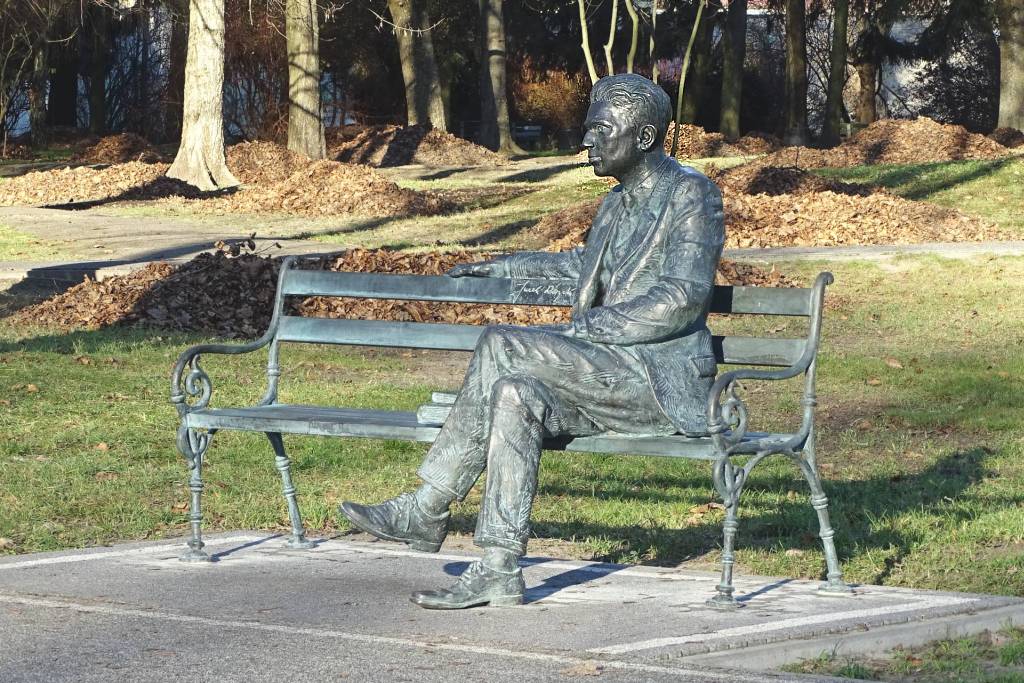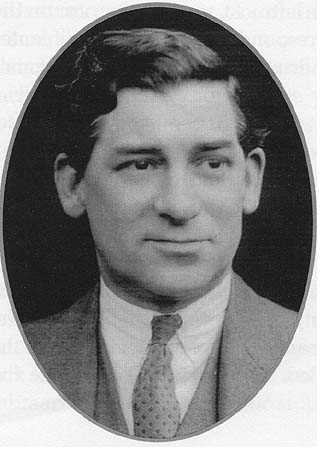<Back to Index>
- Mathematician Jerzy Witold Różycki, 1909
- Engineer Harold Hall "Doc" Keen, 1894
PAGE SPONSOR


Jerzy Witold Różycki (Vilshana, near Kiev, July 24, 1909 – January 9, 1942, Mediterranean Sea, near the Balearic Islands) was a Polish mathematician and cryptologist who worked at breaking German Enigma - machine ciphers.
Różycki was born in what is now Ukraine, the fourth and youngest child of Zygmunt Różycki, a pharmacist and graduate of Saint Petersburg University, and Wanda, née Benita. He attended a Polish school in Kiev before moving with his family to Poland in 1918. In 1926 he completed secondary school at Wyszków on eastern Poland's Bug River.
Różycki studied mathematics 1927 – 1932 in western Poland, at Poznań University's Mathematics Institute, graduating with a master's degree February 19, 1932. He would later earn a second master's degree from Poznań University, in geography, on December 13, 1937.
In 1929, while still a student, Różycki, proficient in German, was one of twenty - odd Poznań University mathematics students who accepted an invitation to attend a secret cryptology course organized at a nearby military installation by the Polish General Staff's Cipher Bureau, headquartered in Warsaw.
From September 1932 Różycki served as a civilian cryptologist with the Polish General Staff's Cipher Bureau, housed till 1937 in Warsaw's Saxon Palace. He worked there together with fellow Poznań University mathematics alumni and Cipher Bureau cryptology course graduates Marian Rejewski and Henryk Zygalski.
After Rejewski had reconstructed the German military Enigma machine in December 1932, Różycki and Zygalski likewise worked at ongoing development of methods and equipment to exploit Enigma decryption as a source of intelligence. Różycki invented the "clock" method, which sometimes made it possible to determine which of the machine's rotors was at the far right, that is, in the position where the rotor always revolved at every depression of a key. Różycki perished in the Mediterranean Sea on January 9, 1942, while returning to the Cadix center, near Uzčs in southern, Vichy France, from a stint at its branch office at the Château Couba on the outskirts of Algiers. His passenger ship, the Lamoricičre, sank in unclear circumstances near the Balearic Islands. Fellow victims of the disaster, among the 222 passengers killed, included Piotr Smoleński and Capt. Jan Graliński, of the prewar Cipher Bureau's Russian section, and a French officer accompanying the three Poles, Capt. François Lane.
In 1938, aged 29, Różycki had married Maria Barbara Mayka. Their son, Janusz Różycki, born May 10, 1939, would complete his studies at Warsaw's Academy of Fine Arts and go on to be a member of the Polish fencing team that won a silver medal at the 1964 Tokyo Olympics.

Harold Hall "Doc" Keen (1894 – 1973) was a British engineer who produced the engineering design, and oversaw the construction of, the British bombe, a code - breaking machine used in World War II to read German messages sent using the Enigma machine. He was known as "Doc" Keen because of his habit of carrying tools and paperwork in a case resembling a doctor's bag. After the war he was awarded the O.B.E..
Keen was born in the borough of Shoreditch in east London in 1894. By age 18 he had moved to Kentish Town and began studying Electrical Engineering.
In 1912 he joined the British Tabulating Machine Company (BTM),
established to import and assemble American punched card technology. In
1916, Keen joined the Royal Flying Corps and was assigned to the ground
staff of a bomber squadron in northern France. In 1919 he returned to
BTM and married an Eva Burningham. In 1921, Keen moved with BTM to
Letchworth in Hertfordshire.
Two years later, he was appointed head of the Experimental Department,
and his innovations there gained him the reputation as the leading
British innovator of punched card technology; Keen was granted more than
sixty patents. In the 1930s he became Chief Engineer.
A machine called the cryptologic bomb (Polish: bomba kryptologiczna) had been produced by the Polish codebreakers in their successful breaking of Enigma before 1939. It was, however, useful only as long as the Germans continued with particular weaknesses in operating procedure, which they gradually tightened up, so that the Polish success rate diminished dramatically. Alan Turing designed the British bombe on a more general principle, the assumption of the presence of text, called a crib, that cryptanalysts could predict was likely to be present at a defined point in the message. This technique is termed a known plaintext attack and had been used to a limited extent by the Poles, e.g., the Germans' use of "ANX" — German for "To," followed by "X" as a spacer.
As chief engineer at the British Tabulating Machine Company at Letchworth Keen was approached to turn these ideas into a working reality. The first bombe, which was based on Turing's original design, was installed in Hut 1 at Bletchley Park on 18 March 1940 and was named "Victory". The second bombe, named "Agnus dei", later shortened to "Agnes", or "Aggie", was equipped with an important additional feature, the diagonal board that had been designed by Gordon Welchman. It was installed on 8 August 1940; "Victory" was later returned to Letchworth to have a diagonal board fitted.
During 1940, 178 messages were broken on the two machines, nearly all successfully. Because of the danger of bombes at Bletchley Park being lost if there were to be a bombing raid, five bombe outstations were established, at Adstock, Gayhurst, Wavendon, Stanmore and Eastcote. The bombe was referred to by Group Captain Winterbotham as a "Bronze Goddess" because of its color. The devices were more prosaically described by operators as being "like great big metal bookcases".